Get the weekly SPARTANAT newsletter.
Your bonus: the free E-Book from SPARTANAT.
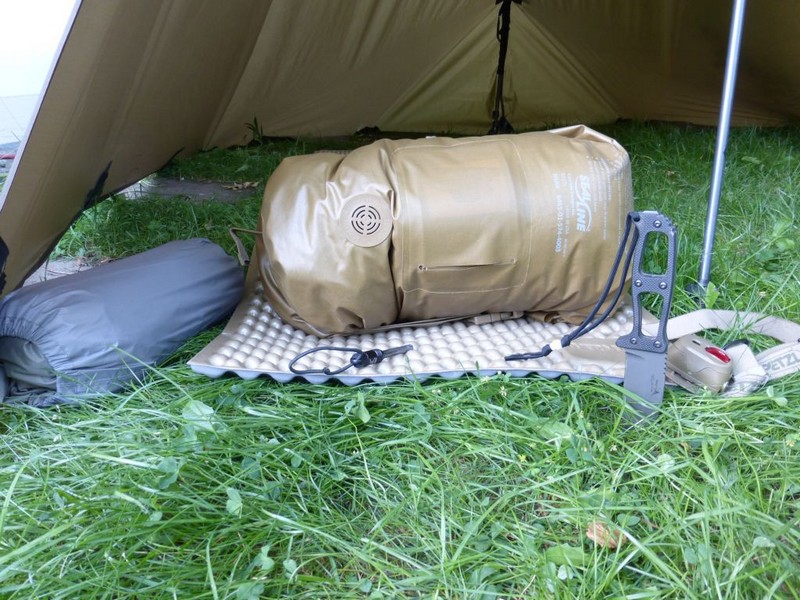
Same text
The text discusses the US Marine Corps Sleeping Bag System, which differs from the US Army's system. It uses lightweight Goretex components and functional clothing for better packing size and weight. The system is rated for 3 seasons and provides protection against rain and insects. It is a compact and versatile sleeping bag option.
For some time now, the United States Marine Corps (USMC) has been taking a different approach to equipment than the US Army. While during the Iraq war they shared backpacks, sleeping bags, and even camouflage uniforms, today it's a completely separate world. The USMC Sleeping Bag System is conceptually different from the Army version. While the regular US forces have a bivouac sack made of heavy Goretex, a summer sleeping bag, and a winter sleeping bag, the Marine Corps has thought farther ahead. Martin has taken a look at the Marine's sleeping bag system for you.
Instead of using a 3-component system, only a bivouac sack made of lightweight Goretex and a "summer sleeping bag" from Propper are used here. Everything else is supposed to be compensated for by the Level 1-7 functional clothing, which is already available (also in the Army). This naturally results in much better packing size and weight. All components together weigh just 2.21 Kg. The USMC Sleeping Bag System is advertised as 3-Season ready.
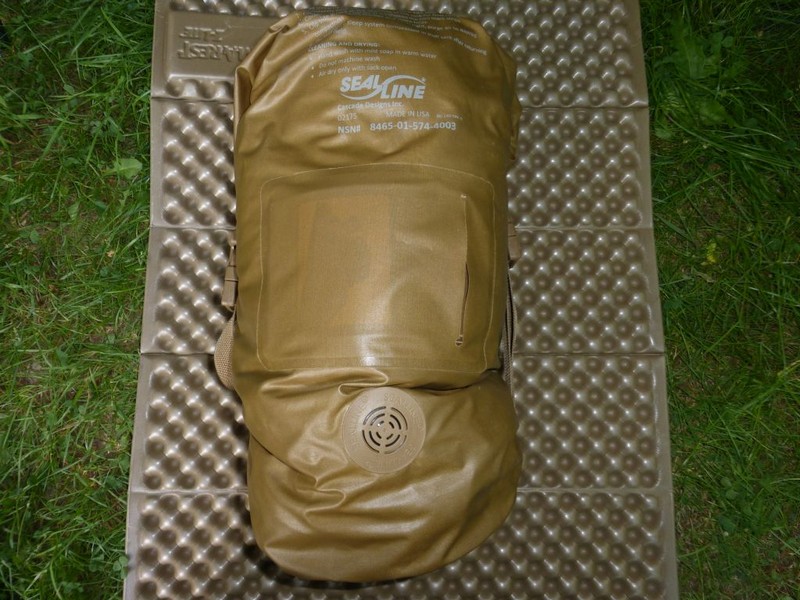 It should be noted that there are already two different versions of the Sleeping Bag System - the one presented here seems to be the first generation. The second generation has improvements on the bivouac sack including a vertical strut on the mosquito net (seen in this video review on Youtube) and the sleeping bag can be attached to the bivouac sack from the inside.
It should be noted that there are already two different versions of the Sleeping Bag System - the one presented here seems to be the first generation. The second generation has improvements on the bivouac sack including a vertical strut on the mosquito net (seen in this video review on Youtube) and the sleeping bag can be attached to the bivouac sack from the inside.
The sleeping bag itself feels like the green summer sleeping bag from the US Army system, but it is slightly warmer.
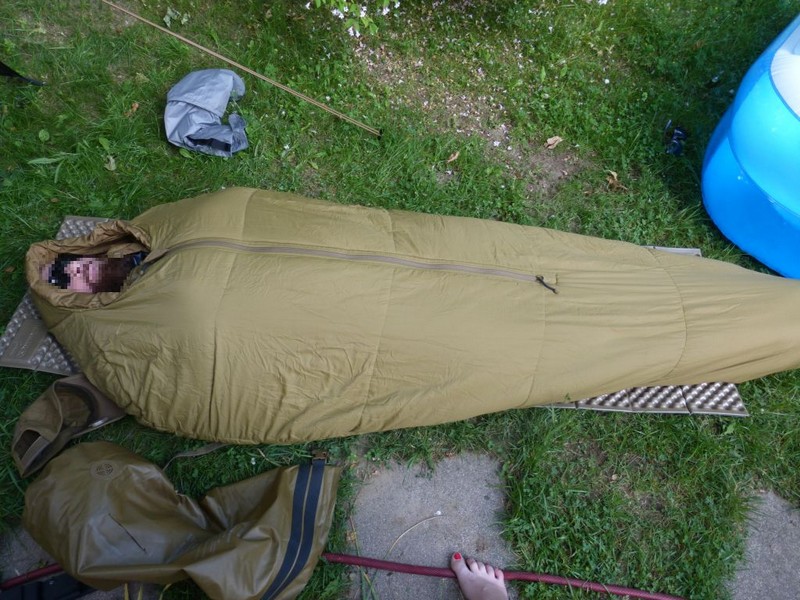
It is rated for 20 degrees Fahrenheit, which is about -6° Celsius. When used together with the bivouac sack, an additional +5° can be added. Anything beyond that, as mentioned before, is covered by clothing. The sleeping bag can be opened 2/3 of the way and has a warm collar to be used without the hood. The sleeping bag itself weighs 1.16 Kg.
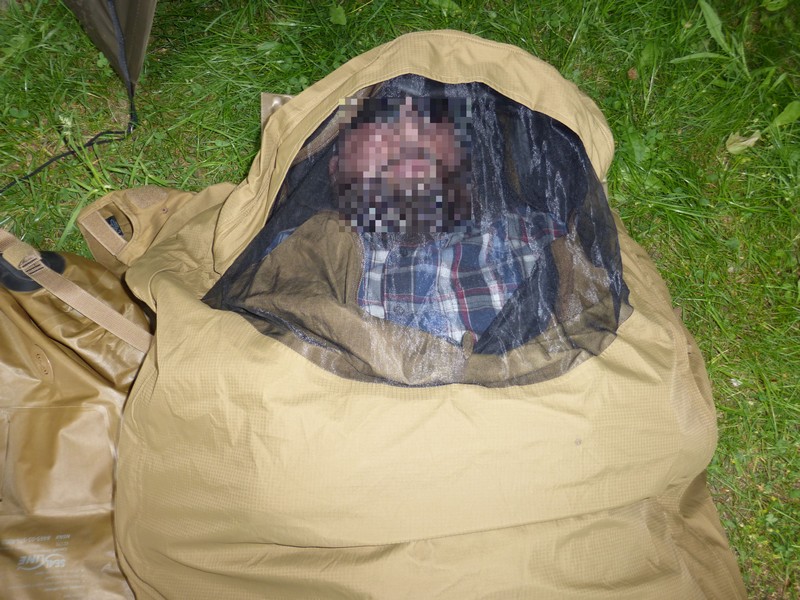 The Bivy Cover is a real improvement over the predecessor. It now has a mosquito net in the head area that can also be completely closed (at the top). Furthermore, a horizontal bar is incorporated to prevent the cover from lying on the face. The cover weighs 850g and is much lighter than the Army version. Also, the thinner Goretex membrane provides more breathability. In the summer, you can completely seal it with the sleeping bag open inside to protect yourself from insects without overheating.
The Bivy Cover is a real improvement over the predecessor. It now has a mosquito net in the head area that can also be completely closed (at the top). Furthermore, a horizontal bar is incorporated to prevent the cover from lying on the face. The cover weighs 850g and is much lighter than the Army version. Also, the thinner Goretex membrane provides more breathability. In the summer, you can completely seal it with the sleeping bag open inside to protect yourself from insects without overheating.
Here is the SPARTANAT lying test again. Closed, with the mosquito net open:
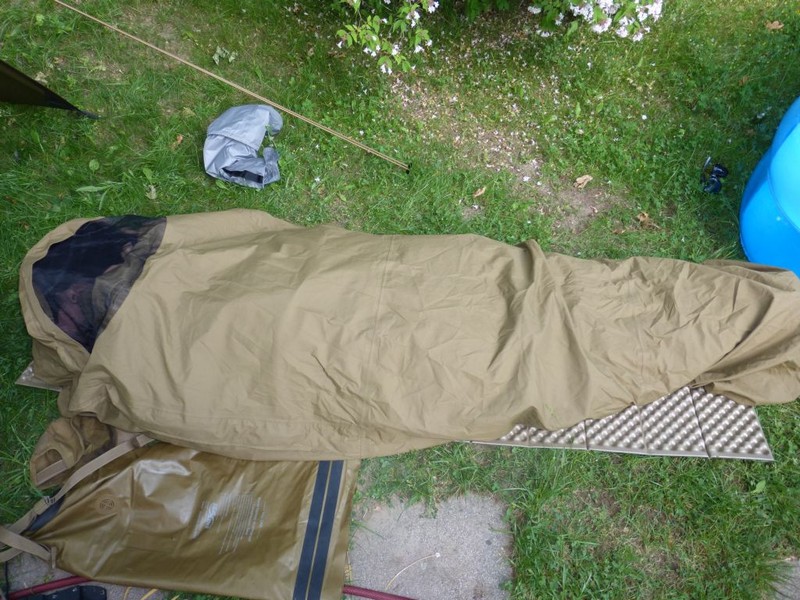
Fully closed:
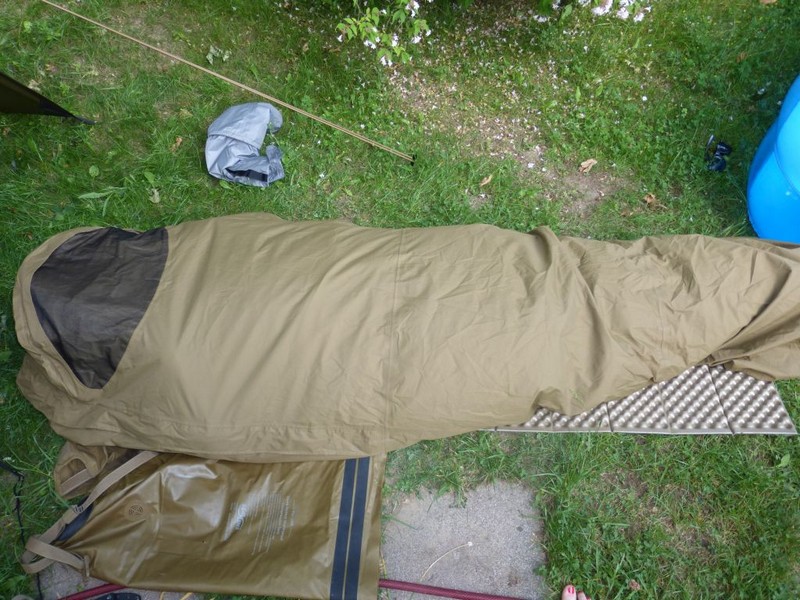

Finally, the compression sack is worth mentioning, which is completely waterproof. The days of needing a thousand buckles and straps to compress the sleeping bag are over - here there are 2 buckles and an air valve - and the entire system can be compressed to the size of a Nalgene bottle. In the image, the compression sack is minimally compressed, it can be further compressed to half its size. The sack weighs 200g. The compression system is from Cascade Designs and the drybag line is called Sealine.
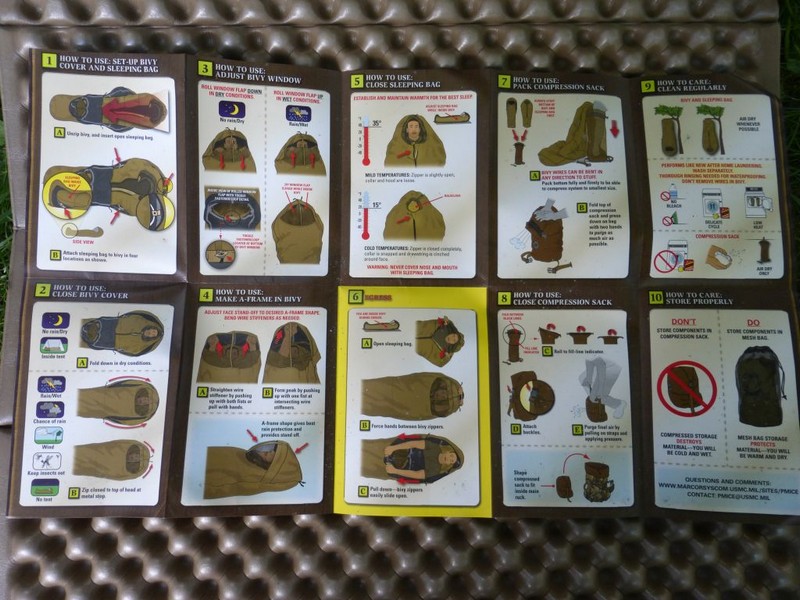
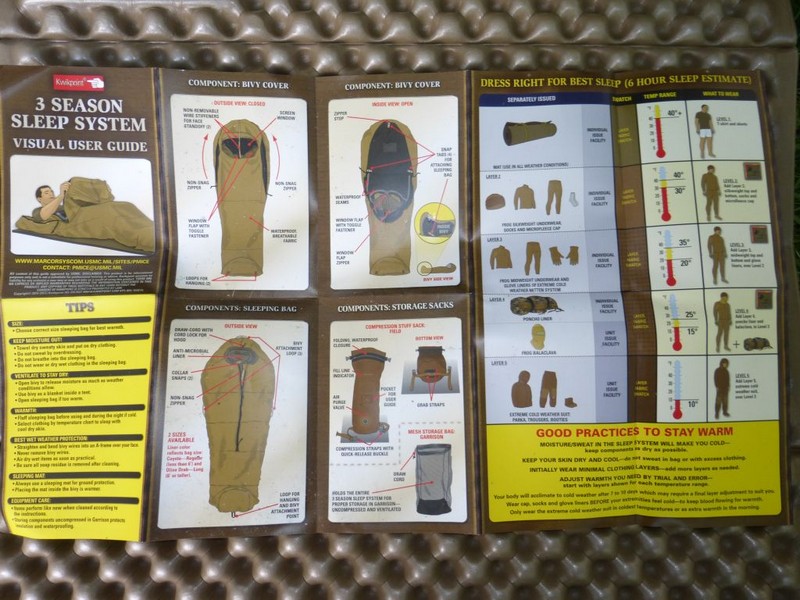
There is also a user guide attached to the outside of the compression sack, showing which clothing to wear at different temperature ranges. It also provides care and usage instructions.
CONCLUSION: A truly lightweight sleeping bag that provides excellent protection against rain and insects, while still maintaining a good packing size - what more could you want? Assuming you have the appropriate functional clothing to avoid freezing below -11°, it's a full-fledged 4-season sleeping bag.
You can find the USMC Sleeping Bag System on Ebay.com for around 250 dollars.
SPARTANAT is the online magazine for Military News, Tactical Life, Gear & Reviews.
Send us your news: [email protected]
Ad
similar
Get the weekly SPARTANAT newsletter.
Your bonus: the free E-Book from SPARTANAT.


